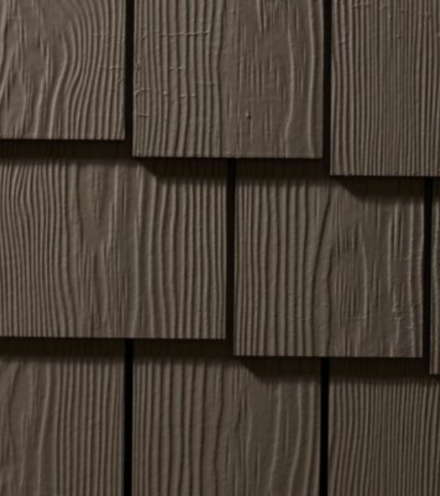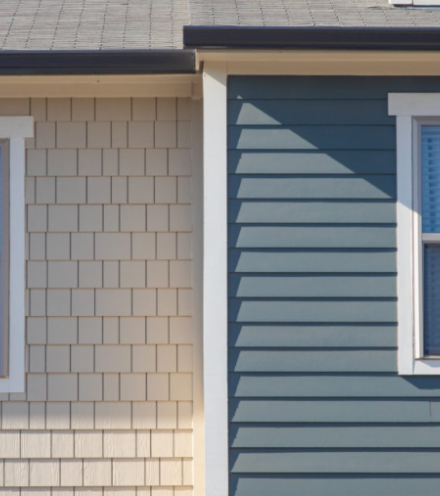When designing or remodeling your home’s exterior, you may fall back on traditional design elements and materials. While going with these familiar methods seems like the easy choice, it’s wise to take your time and learn more about the other options that are now available.
Fiber cement is an innovative building material that serves as an alternative to traditional materials, like wood. But you may wonder, what’s wrong with wood? Take a look at the pros and cons of using wood beadboard ceiling panels. Once you know the difference, you’ll turn to fiber cement and never look back!
Using Wood Beadboard Ceiling Panels
Wood is a time-tested building material that has been around for centuries. Builders definitely have an element of trust with this material, which has been cultivated for many types of projects. And there are certainly some advantages to choosing natural wood beadboard for your home project.
1. Familiar Aesthetic
First, wood carries a quite nostalgic aesthetic that tends to strike an emotional chord with onlookers. When considering an exterior wood aesthetic for the home, a lot of people imagine a cozy cabin in the woods, a lake house from their childhood, or a family home on the prairie or frontier. These classic imaginings from cultural narratives gives natural wood beadboard an edge because of its powerful connection with the emotional side of folks. This is certainly a great advantage of classic wood.
However, it should be noted that natural wood beadboard isn’t the only material capable of provoking such significance. In fact, fiber cement beadboard has such a striking resemblance to natural wood that many homeowners cannot tell the difference at first glance. Fiber cement beadboard, therefore, can achieve the same ambiance as natural wood because of its incredibly attractive appearance that resembles real wood.
2. Solid Building Material
A second pro of using wood beadboard ceiling panels is that it seems like wood is a sturdy material that can be trusted for creating stability in the structure. Wood is heavy, and often, impenetrable against minor impacts. It provides a solid defense against the architectural structure of the home.
However, though wood may be sturdy and heavy, it is not flawless. On the other hand, fiber cement beadboard is intentionally designed with durability in mind. Though wood may seem like the sturdier option, it pales in comparison with fiber cement, which has defenses against many elements that wood does not, including insect, water and moisture resistance.
Drawbacks of Wood Beadboard Ceiling Panels
While wood has been a long-standing choice for builders, there are many reasons to also look for an alternative material. Look out for these cons of natural wood beadboard.
1. Water Damage
Wood can get rotten quite easily with repetitive exposure to rain, fog, moisture, and humidity. This can cause the wood beadboard ceiling panels to warp, sag, fray and deteriorate before your eyes. Unlike natural wood, fiber cement has been carefully treated to resist the dangers of water damage, so you won’t have to replace individual panels due to these issues that are all too common with real wood.
2. Insect Damage
Like water, insects can have a terrible impact on real wood paneling. Holes, nests, and infestations are quite common when creating an outdoor ceiling using natural wood beadboard. Instead, try a fiber cement alternative, which does not incur insect damage in the same way as wood.
3. Fire Risk
Beadboard plywood ceiling panels can go up in flames in an instant. Because you are planning an outdoor oasis, which may be in close proximity to barbecue pits, grills, fireworks, candles, bonfires or more, fire safety should be an utmost priority. This is another great reason to rely on fiber cement beadboard, which is designed to be fire-resistant.
4. General Upkeep and Maintenance
Photo by Daniel Meyer
Because of all the aforementioned risks with wood beadboard, there’s a good chance you’ll spend a lot of time and money keeping it looking good. Whether the wood paneling requires replacements, repainting or splicing in new paneling, there will always be another maintenance task to add to your list. With fiber cement, you can cut down on upkeep and use your time and money where you want!
So before settling on the tempting familiarity of real wood, be sure to consider the pros and cons of using wood beadboard versus fiber cement. When you consider the alternative, the choice is clear: fiber cement is the way to go for creating your ultimate outdoor sanctuary!




